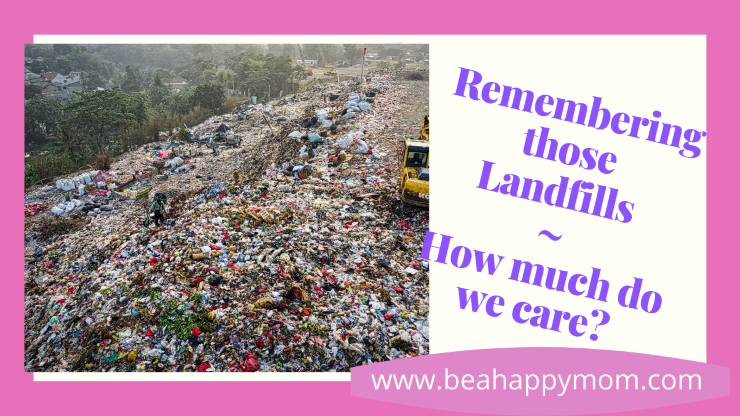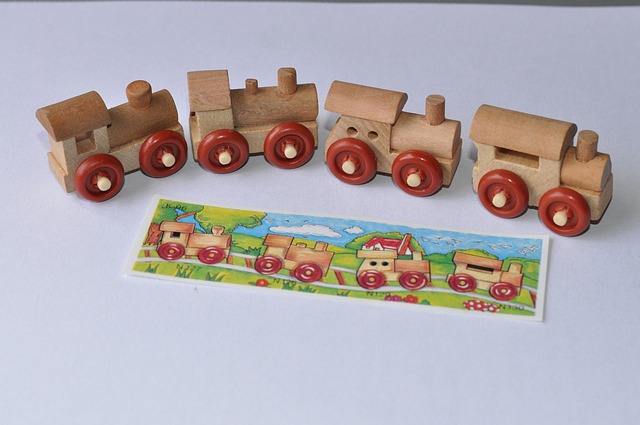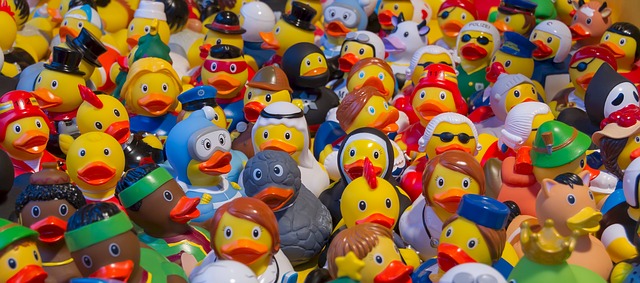Do you ever stop to think about landfills and how they impact on not just the environment but our health too? Did you know that a large percentage of what makes up our landfills comes from plastic waste? Mostly people talk about plastic bags, disposable silverware and crockery as contributing to landfills. Here is another category to consider – do you ever consider what happens when you discard of your children’s toys or games? Do you stop to consider what material the toys you give to your children are made of and whether this matters?

How do you decide which toy to purchase for your child?
Let’s turn this question around a little. I’d like to ask you first how you decide what type of toy you are going to give to your children? Does your choice go by price tag, developmental stage, the material used, popularity, type of colour (bright and shiny or calm, natural tones)? Do you consider the play value? Do any of these details suit your decision-making process or is there something else that prompts you to decide which toys to fill your children’s toy box with?
As you can see, deciding on what toy to purchase for a child demands giving careful thought and consideration to a wide range of factors. The above ideas demonstrate some of the many variables to consider. Let’s take two of the factors and look at them in a little more detail. In this article, we are going to look at plastic toys versus toys made of natural materials.
Have you considered toys of natural materials?
When it comes to natural materials, there are of course many that lend themselves to being turned into toys. You can use materials such as wood, wool, cotton, or natural fabrics. Out of these natural materials, one can make e.g. wooden building blocks or cars, soft toys, dolls‘ clothing. Let us begin with wood, we can return to other natural fibers and materials in another article.
Wooden toys and their benefits

If we think about the properties of wood, wood comes from trees, which might sound obvious but this means that wood is environmentally friendly. If your toys are no longer fit for use it can be broken down, recycled into another item, or can decompose back into the environment. Along the line of environmentally friendly, the paint used to colour or tint the wood can be non-toxic, thus ensuring a healthy product for your children to play with.
Wood is durable and has a long life span, especially when it has been polished or varnished, taking the care that the varnish is non-toxic. Speaking of varnish, it is important to note that wood can rot or develop wood beetle if not treated correctly. It is therefore important to know a little about the finished product that you purchase.
How about batteries of electronic mechanisms?
I read an article that suggested that wooden toys would all be free from batteries, however this point I challenge. The truth is that one can use wood to build up a model and add parts to make that model come alive. This could be the mechanism of a clock, thus turning a piece of wood into a real item to tell the time. Once we can add a mechanism to a piece of wood, then a model car can be made to move as can a boat or other object.
Similarly, instead of using an electronic mechanism, one can keep to natural fibres and add strands of string to turn pieces of wood into a puppet. As you can see, there is a lot of fun one can have with wood, whether it is wooden blocks or a toy that can move and be manipulated. Remember the ever-popular construction toy called the Tinker Toy?
Considerations with Wood
Are wooden toys always safe? As with most items when you have children around, you do need to regularly monitor your wooden or natural toys. Edges of a wooden block can at times be sharp or hard. This can necessitate sanding down the ends to round or soften them or selecting your wooden toys with care. Likewise, a toy that has not been varnished has the risk of splintering, which is a reason to regularly inspect your children’s toys.
Some thoughts about plastic toys

The description thus far gives some insight into the world of wooden toys. Let us look now at plastic toys. While some say that wooden toys are more durable, some will highlight the fact that plastic toys are washable. In truth, wooden toys can be washed in warm water with soap.
A few facts about plastic toys
- If plastic breaks it can result in very sharp edges that can cut or hurt a child
- There is a toxic element to plastic
- The statistics of waste produced by plastic has now reached 8.3 billion metric tons. That is a global figure and is quite alarming
- Plastic only came into being approximately 115 years ago. As a result there are no stats as yet of plastic completely decaying. The only data on this topic is from predictions. According to predictions the scientists state that it will take about 1000 years for plastic to decompose if it does.
- While recycling is becoming more and more popular, there are a number of complications when it comes to recycling toys. Some parts can be use to repair a e.g. a doll. However, outright recycling of the plastic is complicated.
- Plastic toys that have batteries, need to be monitored regularly and the batteries removed when the toy is not being used. A leaky or corroded battery can cause rust of screws used to close the battery compartment, not to mention the toxic fluid that your child is at risk of being exposed to.
With both plastic and wooden toys, it is important to make sure that any small, removable parts are stored away from the reach of babies and small children. Aside from a potential cause of injury, small parts pose a choking hazard.
A few more thoughts about wooden toys
Wooden puzzles are the most popular. Children learn shapes, puzzles, animals, and more from wooden jigsaw puzzles. Beads need not be plastic, wooden beads have a wonderful feel. Wood has a certain warmth to it whereas plastic is always cold.
What are your thoughts on toys that your child no longer needs? In a survey carried out in the UK, 25% of parents admitted to throwing out toys that were still in working order. As mentioned above, wooden toys are environmentally friendly. Plastic toys, if they end up in the garbage create a problem of a plastic landfill.
In another survey, parents admitted that their children have, on average 4 toys that they are not playing with. Too many toys are overwhelming. This creates a problem when one wishes to begin to de-clutter or make space for toys and games that are more suitable for a new stage of development. What can we do with those plastic toys when they are no longer appropriate for your children?
As mentioned, the problem is that the type of plastic used is not suitable for recycling. This means that parents need to be creative with how to let go of unwanted toys.
What can you do with unwanted toys?
- Donate toys to a charity shop or a needy family..
- Donate the toys to a toy library.
- Consider setting up a toy library.
- Swap toys with friends.
- Donate it to a child care center or kindergarten.
- You could also explore whether there is a toy hospital in your area. If there is, you can donate your toys for parts.
Regarding our initial list of possible factors to consider when purchasing a toy, some children are more attracted to bright colours. As a result, parents might purchase plastic toys that offer those bright colours. Did you know that wooden toys can come in bright colours too?
Before we leave this topic, we touched on the fact that wood is warm and plastic is cold. Wooden or natural toys offer a sensory experience that brings with it a calming, healing effect that can not be found as easily in plastic toys.
What are your thoughts? How do you decide on what type of toys to give to your children? Do you prefer natural or even handmade toys? Have you thought about the various considerations related to plastic toys? Let us know in the comments below.